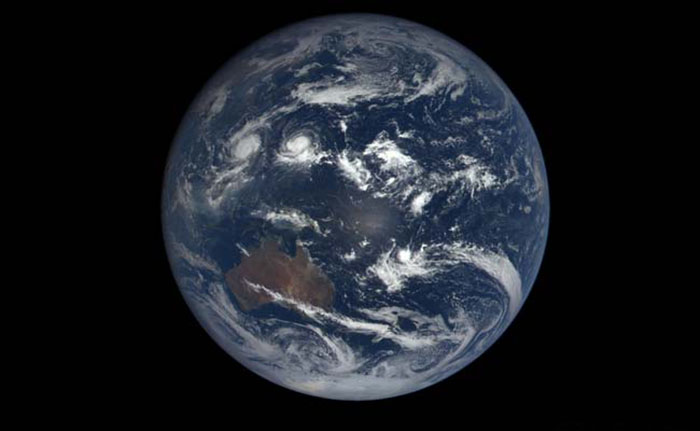In a study published Wednesday in Nature, researchers report the first ever "planet" (it`s really only about the size of an asteroid) found orbiting a white dwarf some 570 light years away from Earth. It`s very close to its dead host -- about twice the distance that the Earth is from the moon -- and orbits once every 4.5 hours. According to the scientists studying the object, this proximity has been its undoing.
By observing the passage of the planetoid in front of its host star using the Kepler telescope, the researchers found signs of a rocky world torn asunder. Kepler (now called K2) works by showing scientists variations in the brightness of stars, which can reveal the transit of planets between the stars and the telescope. The pattern of this white dwarf`s dimming indicated an irregular shaped object, like a comet with a trailing tail. The researchers believe this unusual signature is caused by a cloud of dusty debris from the disintegrating object, which is being pulled apart by the dense star`s strong gravity.
"This is something no human has seen before," lead author Andrew Vanderburg of the Harvard-Smithsonian Center for Astrophysics said in a statement. "We`re watching a solar system get destroyed."
The findings help explain an unusual phenomenon that`s been observed previously. Because a white dwarf has such strong gravity, any heavy elements (like calcium, silicon, and iron) should get pulled down into its core, leaving just the lightest elements like helium and hydrogen on its surface. But some white dwarfs are found to have surfaces polluted with heavier elements, and scientists suspected that the elements might be debris from recently demolished planetary bodies. This study takes a huge step in proving that this is the case.
"For the last decade we`ve suspected that white dwarf stars were feeding on the remains of rocky objects, and this result may be the smoking gun we`re looking for," Fergal Mullally, staff scientist of K2 at SETI and NASA`s Ames Research Center, said in a statement. "However, there`s still a lot more work to be done figuring out the history of this system."
Because our sun will be a white dwarf one day, systems like these could give us a glimpse into our own bleak -- but thankfully distant -- future.
More about:










-1745485667.jpg&h=190&w=280&zc=1&q=100)





































